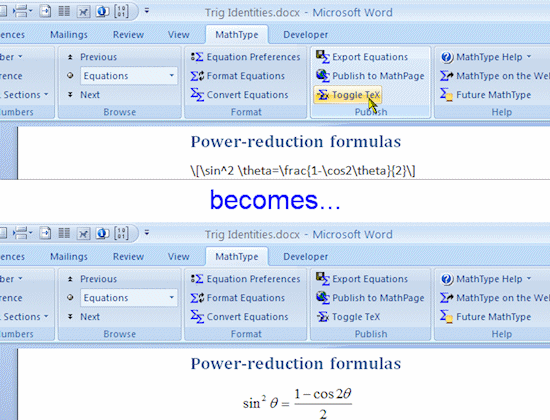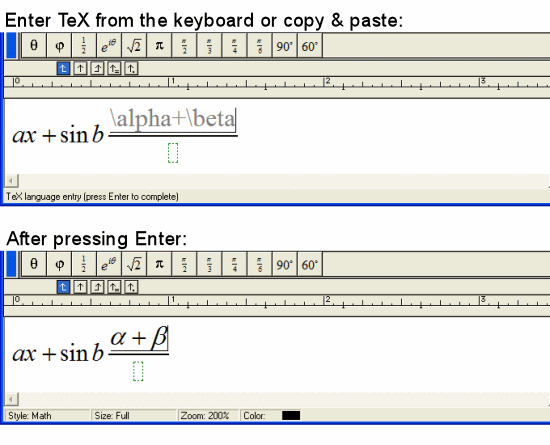MathType for people that know TeX/LaTeX
TeX is a typesetting language invented in the 70’s that’s popular with some mathematicians, physicists, and chemists. LaTeX is a popular derivative of TeX. While TeX has a long learning curve, if your hands already “know” TeX syntax, you can leverage that knowledge while still reaping MathType’s advantages in easy editing and application/document compatibility.
Type equations in TeX directly into Word: You can type TeX directly into your Microsoft Word document. When you are done, type Alt+\ (Toggle TeX) to convert it to a MathType equation. Later, if you want to edit the equation’s TeX code, just type Alt+\ again. The Toggle TeX command allows you to switch between TeX and MathType views of the equation.

Mix typing TeX with point-and-click editing: You can enter equations quickly using MathType’s TeX input mode. TeX editing can be mixed with point-and-click editing so you get the best of both worlds.

Paste TeX from existing documents: Many TeX users have existing documents with lots of equations. Just copy them to the clipboard and paste into a MathType equation window to avoid retyping them.
Export equations to TeX/LaTeX: MathType comes with translators for several variant’s of TeX/LaTeX:
Plain TeX (as described in Donald Knuth’s The TeX Book)
AMS-TeX (Plain TeX with extensions from the American Mathematical Society)
LaTeX (version 2.09 and later)
AMS-LaTeX (LaTeX with AMS extensions)
Build larger equations by combining handwritten sub-expressions in MathType: While it is easy to handwrite short mathematical expression, longer ones are much harder. MathType lets you have the best of both worlds by allowing you to use its point-and-click editing window to combine multiple hand-written expressions.
Customizable translators: Each translator is defined in a text file using a simple scripting language. This allows you to customize any of our translators to suit your own needs, or even create one from scratch.

